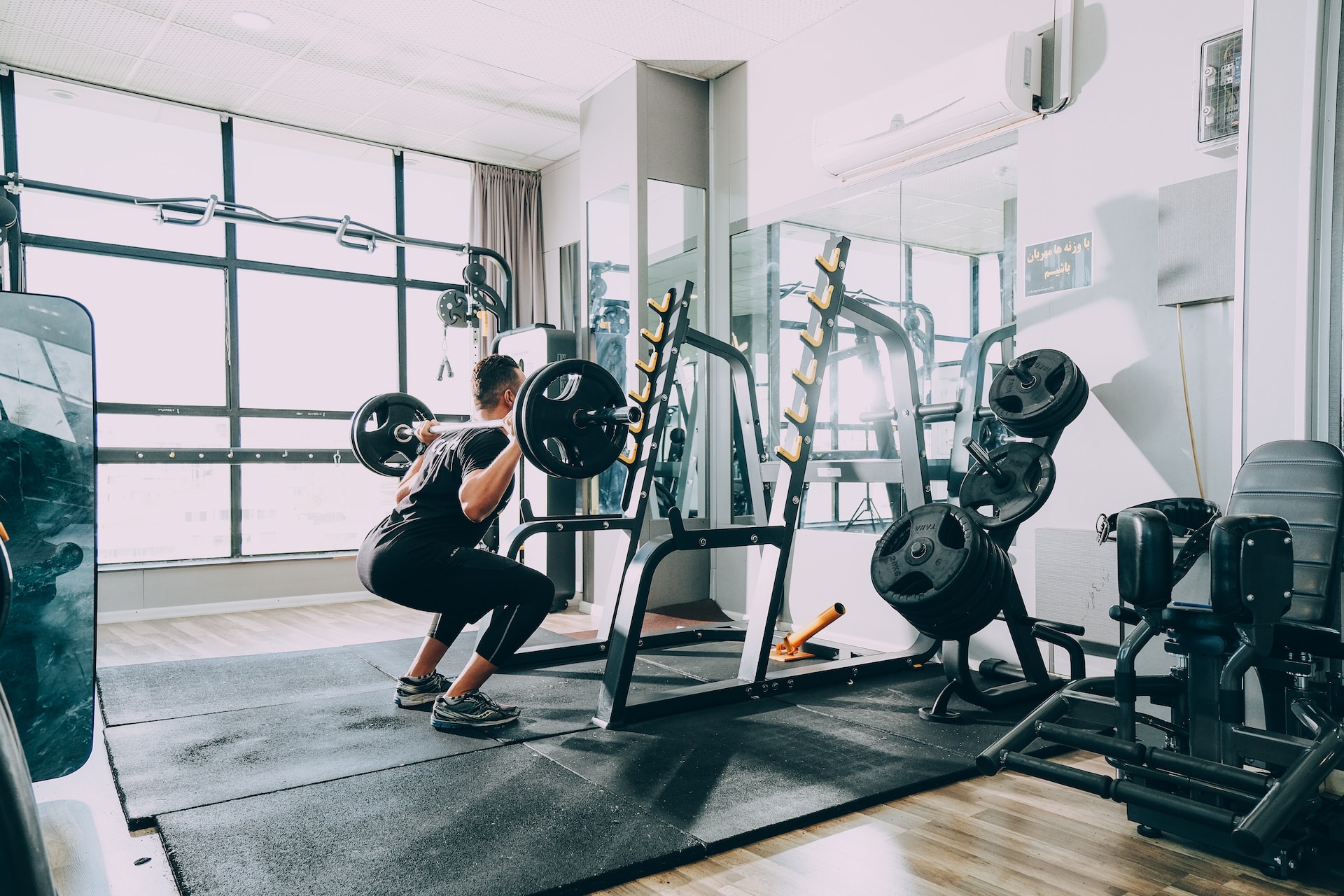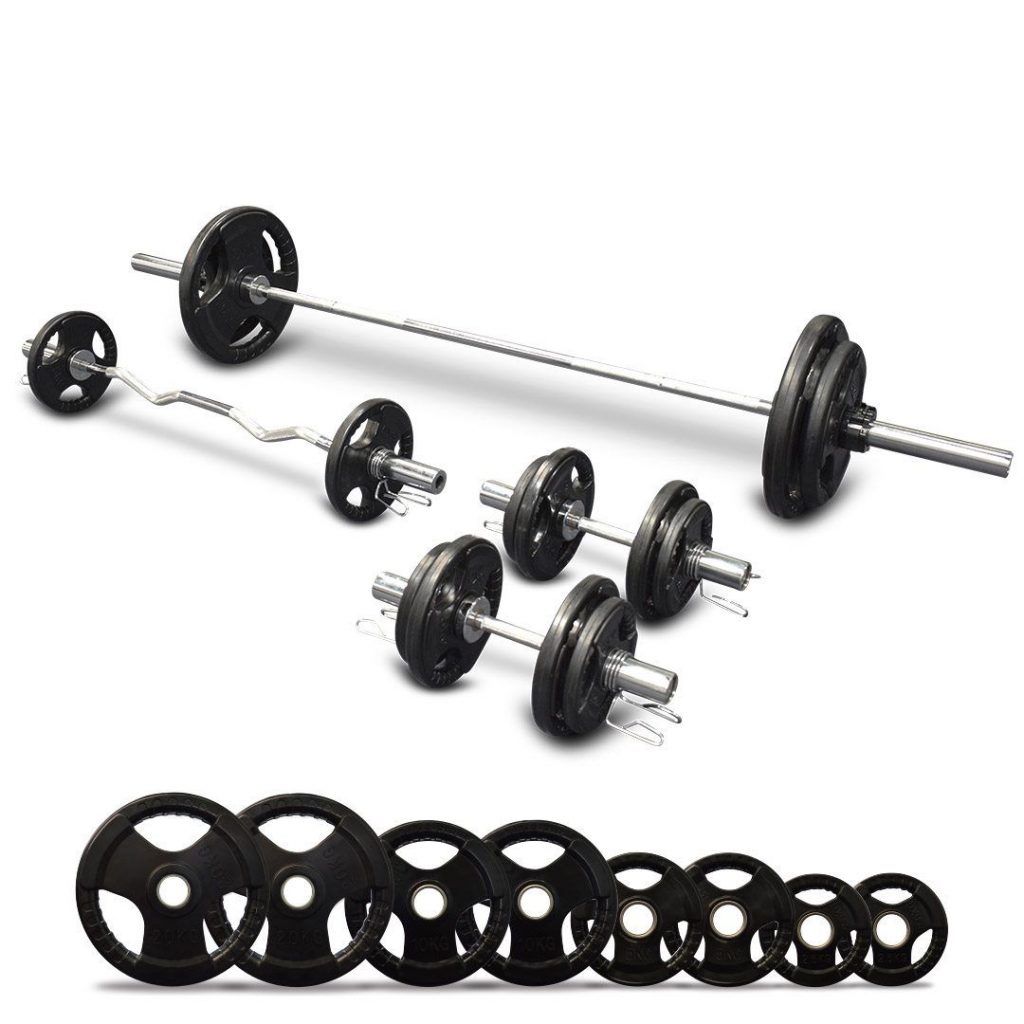
Ultimate Guide to Choosing the Perfect Barbell and Weight Set
Did you know that a staggering 80% of beginners end up buying the wrong barbell and weight set packages? Choosing the right gym equipment is crucial to ensure effective workouts and avoid unnecessary injuries. But with so many options out there, how do you navigate through the maze of choices?
In this guide, we’ll walk you through everything you need to know about selecting the perfect barbell and weight set package. From understanding the characteristics of different materials to considering competition-grade standards, we’ve got you covered. So, get ready to embark on your fitness journey with confidence and make an informed purchase decision.
Factors to Consider When Buying a Barbell and Weight Set Package
Quality of Materials
One of the most important factors to consider when buying a barbell and weight set package is the quality of materials used. You want to ensure that both the barbell and weight plates are made from durable materials that can withstand regular use and heavy lifting.
Look for packages that include solid steel or cast iron plates, as these are known for their durability and longevity.
Weight Capacity and Adjustability Options
Another crucial factor to consider is the weight capacity of the barbell and weight set. Make sure that it can handle the amount of weight you plan on lifting.
Look for packages that offer adjustability options, such as different plate sizes or the ability to add more weight as you progress in your strength training journey. This will allow you to continue challenging yourself without needing to purchase additional equipment.
Durability and Warranty
Durability is key. You want equipment that will last for years without wearing down or breaking easily. Check if the manufacturer offers a warranty or guarantee on their products, as this demonstrates their confidence in the durability of their equipment.
By considering these factors – the quality of materials, weight capacity and adjustability options, and durability with warranty – you can make an informed decision when purchasing a barbell and weight set package.
Remember, investing in high-quality equipment will not only provide better performance but also ensure your safety during workouts.
Read Also: Standard and Olympic Weight Set: What’s Best for Your Gym?
Understanding the Different Types of Barbells
Distinctions between Olympic, standard, and specialty barbells
It’s important to understand the different types of barbells available. The three main types are Olympic, standard, and specialty barbells.
Olympic barbells are designed for serious weightlifting and are commonly used in competitions. They have a standardized length of 7 feet and a thicker diameter of 2 inches. These barbells can handle heavy loads and have rotating sleeves that allow for smoother movements during lifts.
Standard barbells, on the other hand, are more versatile and suitable for general fitness purposes. They typically measure around 5-6 feet in length with a thinner diameter of 1 inch. While they may not be as sturdy as Olympic barbells, they can still handle moderate weights.
Specialty barbells cater to specific fitness goals or exercises. For example, there are multipurpose barbells that offer a combination of features from both Olympic and standard bars. There are also end-loaded or “powerlifting” bars that prioritize maximum load capacity.
Benefits and drawbacks of each type for different fitness goals
The choice between Olympic, standard, or specialty barbells depends on your specific fitness goals. If you’re primarily focused on strength training or participating in weightlifting competitions, an Olympic barbell would be the best option due to its durability and ability to handle heavier weights.
For those who prefer more general fitness activities like bodybuilding or home workouts, a standard barbell would be sufficient. It provides enough versatility for various exercises while being more budget-friendly compared to Olympic bars.
Specialty barbells come into play when you have specific needs or preferences. For instance, if you want a multipurpose tool that combines features from both Olympic and standard bars or if you’re targeting powerlifting exercises that require maximum load capacity.
Considerations for grip diameter, knurling, and sleeve rotation
When choosing a barbell, it’s important to consider factors like grip diameter, knurling, and sleeve rotation. Grip diameter refers to the thickness of the barbell and can vary between different types. It’s essential to choose a diameter that feels comfortable in your hands and allows for proper grip during exercises.
Knurling is the textured pattern on the barbell that provides a better grip. The intensity of knurling can differ between bars, so it’s crucial to select one that suits your preference. Some people prefer aggressive knurling for a secure grip, while others may find it uncomfortable.
Sleeve rotation determines how freely the weights spin on the ends of the barbell during lifts. Olympic barbells generally have rotating sleeves that allow for smooth movements, while standard bars may have fixed sleeves or limited rotation.
Read Also: The Best Exercises to Perform with a Barbell Weight Set
Evaluating Your Fitness Goals for Choosing the Right Barbell Set

Determining if you need a barbell primarily for strength training or other purposes
Before purchasing a barbell and weight set package, it’s important to evaluate your fitness goals. Ask yourself if your primary focus is on strength training or if you have other specific purposes in mind.
If you’re mainly interested in strength training, you may want to consider powerlifting barbells or Olympic weightlifting bars. These types of barbells are specifically designed to handle heavy weights and provide stability during intense lifting sessions.
Considering weight increments needed to progress towards your goals
Another factor to consider is the weight increments that will be necessary for you to progress toward your fitness goals. If you’re just starting out or have general fitness goals, a standard weight-lifting bar with adjustable weights may be sufficient.
However, if you have more specific strength training objectives, such as increasing your squat or bench press max, you may want to invest in a specialized squat bar or a powerlifting bar that allows for smaller increments of weight progression.
Assessing the versatility required for various exercises
The versatility of the barbell set is also an important consideration. Think about the variety of exercises you plan on incorporating into your workouts and whether the chosen set can accommodate them.
For example, if you’re planning on performing exercises like deadlifts and overhead presses, make sure the package includes a suitable weight bench and adjustable squat rack.
By evaluating your fitness goals, considering the necessary weight increments, and assessing exercise versatility, you can choose the right barbell set that aligns with your needs. Remember that different individuals may require different types of equipment based on their unique fitness journeys and preferences.
Exploring Additional Accessories and Specialty Bars
Identifying Necessary Accessories
When buying a barbell and weight set package, it’s essential to consider the additional accessories that may be necessary for your workout routine. These accessories can enhance safety, convenience, and overall performance. Some common accessories to look for include collars, weight racks, and lifting belts.
Collars are used to secure the weights on the barbell, preventing them from sliding off during exercise. Weight racks provide a designated space to store your weights when they’re not in use, keeping your workout area organized. Lifting belts offer support to your lower back during heavy lifts, reducing the risk of injury.
Read Also: Top Workout Machines for Weight Loss and Muscle Building
Learning about Specialty Bars
In addition to standard Olympic bars or steel bars included in most packages, there are specialty bars that cater to specific exercises or training goals. Two popular examples are trap bars and safety squat bars.
Trap bars, also known as hex bars, have a unique design that allows you to stand inside the bar while performing exercises like deadlifts or shrugs. This design reduces stress on the lower back and places more emphasis on leg muscles.
Safety squat bars have padded shoulders and handles that provide extra stability and comfort during squats. They can help individuals with limited shoulder mobility or those recovering from injuries perform squats safely.
Considering the Benefits of Investing in Additional Items
While these additional accessories and specialty bars may not be essential for everyone, they can bring added benefits to your workouts. Collars ensure the weights stay in place for safe lifting sessions. Weight racks keep your gym space tidy and make it easier to find the right plates quickly. Lifting belts provide crucial support when handling heavier loads.
Specialty bars like trap bars or safety squat bars offer alternative ways to target specific muscle groups or accommodate physical limitations. They can add variety to your routine and help you achieve better results based on your individual needs.
When purchasing a barbell and weight set package, consider whether these accessories and specialty bars align with your fitness goals and preferences. Investing in them can enhance your workout experience and help you reach your desired outcomes.
Conclusion
Understanding the different types of barbells available, from standard to Olympic and specialty bars, allows you to choose the one that aligns with your fitness goals and preferences. Exploring additional accessories and specialty bars can enhance your workout experience and provide opportunities for diverse exercises.
Now it’s time for action! Take what you’ve learned here and start researching different barbell and weight set packages. Read reviews, compare prices, and visit stores to see the options in person. Don’t forget to consider your own fitness goals and budget while making your decision.
